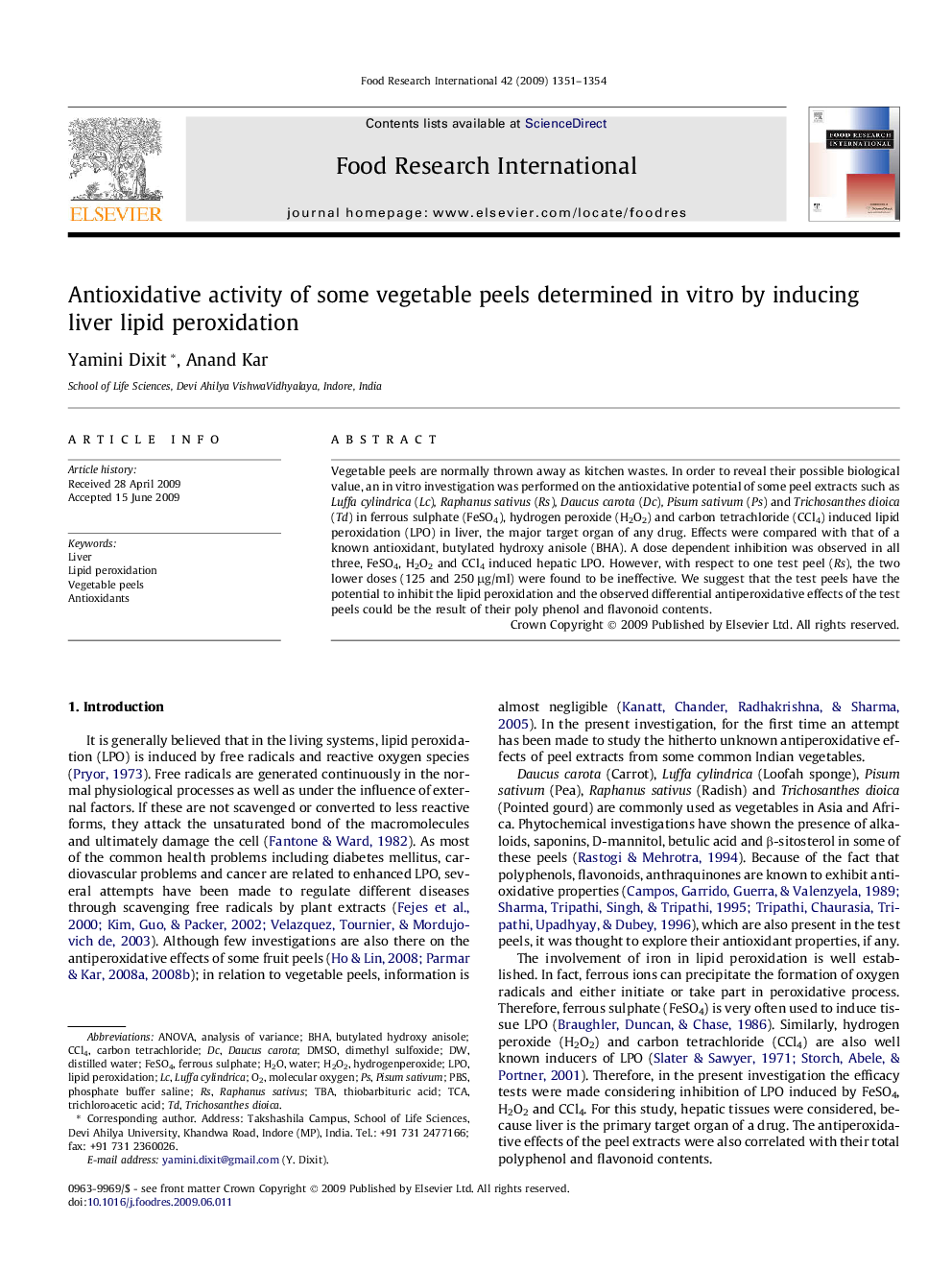| Article ID | Journal | Published Year | Pages | File Type |
|---|---|---|---|---|
| 4562793 | Food Research International | 2009 | 4 Pages |
Vegetable peels are normally thrown away as kitchen wastes. In order to reveal their possible biological value, an in vitro investigation was performed on the antioxidative potential of some peel extracts such as Luffa cylindrica (Lc),Raphanus sativus (Rs),Daucus carota (Dc),Pisum sativum (Ps) and Trichosanthes dioica (Td) in ferrous sulphate (FeSO4), hydrogen peroxide (H2O2) and carbon tetrachloride (CCl4) induced lipid peroxidation (LPO) in liver, the major target organ of any drug. Effects were compared with that of a known antioxidant, butylated hydroxy anisole (BHA). A dose dependent inhibition was observed in all three, FeSO4, H2O2 and CCl4 induced hepatic LPO. However, with respect to one test peel (Rs), the two lower doses (125 and 250 μg/ml) were found to be ineffective. We suggest that the test peels have the potential to inhibit the lipid peroxidation and the observed differential antiperoxidative effects of the test peels could be the result of their poly phenol and flavonoid contents.
